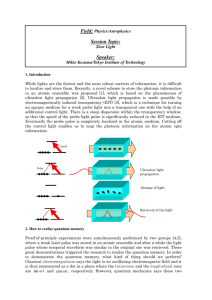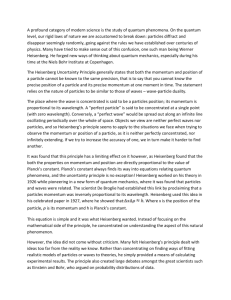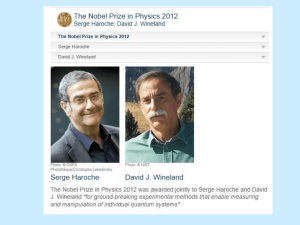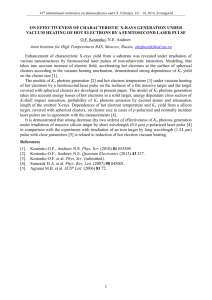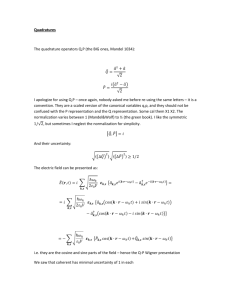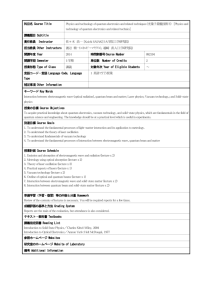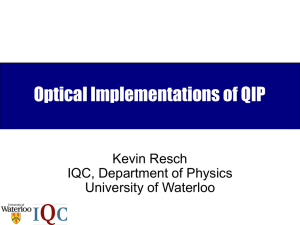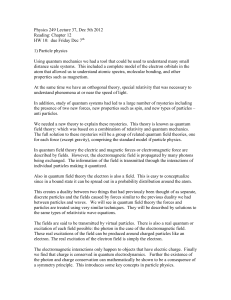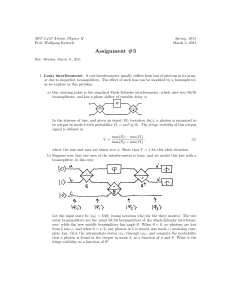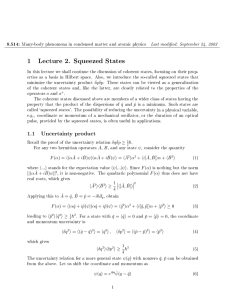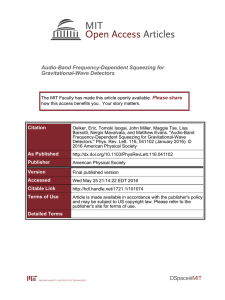Random Science
advertisement
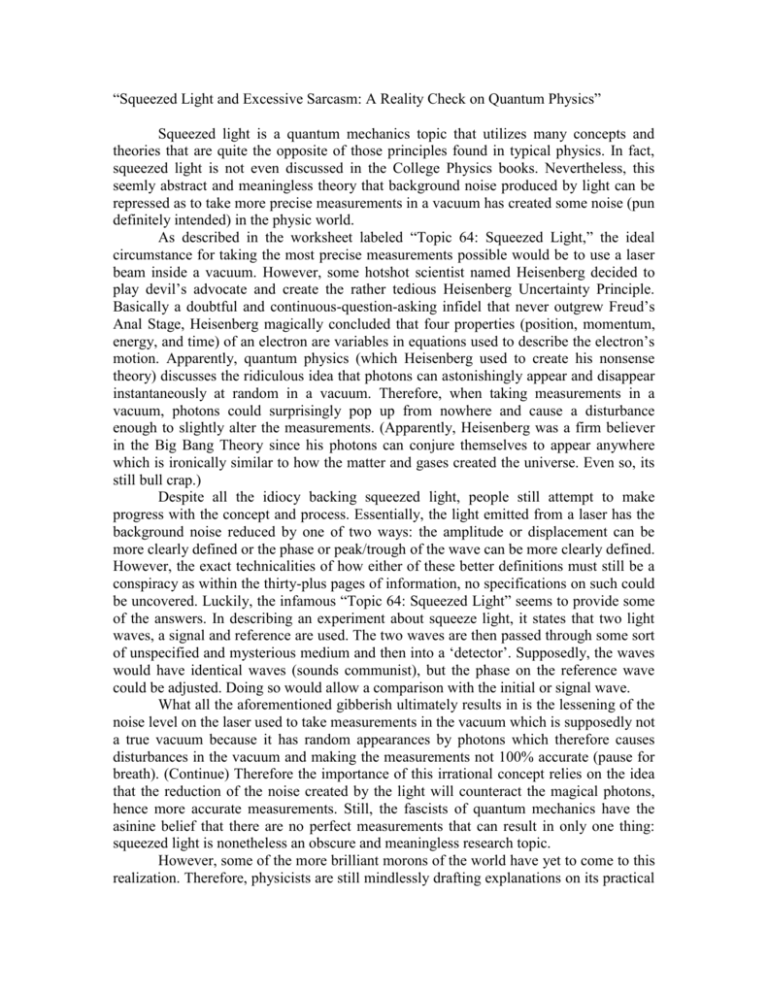
“Squeezed Light and Excessive Sarcasm: A Reality Check on Quantum Physics” Squeezed light is a quantum mechanics topic that utilizes many concepts and theories that are quite the opposite of those principles found in typical physics. In fact, squeezed light is not even discussed in the College Physics books. Nevertheless, this seemly abstract and meaningless theory that background noise produced by light can be repressed as to take more precise measurements in a vacuum has created some noise (pun definitely intended) in the physic world. As described in the worksheet labeled “Topic 64: Squeezed Light,” the ideal circumstance for taking the most precise measurements possible would be to use a laser beam inside a vacuum. However, some hotshot scientist named Heisenberg decided to play devil’s advocate and create the rather tedious Heisenberg Uncertainty Principle. Basically a doubtful and continuous-question-asking infidel that never outgrew Freud’s Anal Stage, Heisenberg magically concluded that four properties (position, momentum, energy, and time) of an electron are variables in equations used to describe the electron’s motion. Apparently, quantum physics (which Heisenberg used to create his nonsense theory) discusses the ridiculous idea that photons can astonishingly appear and disappear instantaneously at random in a vacuum. Therefore, when taking measurements in a vacuum, photons could surprisingly pop up from nowhere and cause a disturbance enough to slightly alter the measurements. (Apparently, Heisenberg was a firm believer in the Big Bang Theory since his photons can conjure themselves to appear anywhere which is ironically similar to how the matter and gases created the universe. Even so, its still bull crap.) Despite all the idiocy backing squeezed light, people still attempt to make progress with the concept and process. Essentially, the light emitted from a laser has the background noise reduced by one of two ways: the amplitude or displacement can be more clearly defined or the phase or peak/trough of the wave can be more clearly defined. However, the exact technicalities of how either of these better definitions must still be a conspiracy as within the thirty-plus pages of information, no specifications on such could be uncovered. Luckily, the infamous “Topic 64: Squeezed Light” seems to provide some of the answers. In describing an experiment about squeeze light, it states that two light waves, a signal and reference are used. The two waves are then passed through some sort of unspecified and mysterious medium and then into a ‘detector’. Supposedly, the waves would have identical waves (sounds communist), but the phase on the reference wave could be adjusted. Doing so would allow a comparison with the initial or signal wave. What all the aforementioned gibberish ultimately results in is the lessening of the noise level on the laser used to take measurements in the vacuum which is supposedly not a true vacuum because it has random appearances by photons which therefore causes disturbances in the vacuum and making the measurements not 100% accurate (pause for breath). (Continue) Therefore the importance of this irrational concept relies on the idea that the reduction of the noise created by the light will counteract the magical photons, hence more accurate measurements. Still, the fascists of quantum mechanics have the asinine belief that there are no perfect measurements that can result in only one thing: squeezed light is nonetheless an obscure and meaningless research topic. However, some of the more brilliant morons of the world have yet to come to this realization. Therefore, physicists are still mindlessly drafting explanations on its practical use and companies have also jumped on the bandwagon. For instance, worksheet “Topic 64: Squeezed Light” reported that AT&T was able to reduce the sound of light by a whopping 7% below the holy quantum fluctuation limit (QFL), and that was in 1985. Since then, “practical” uses of both the uncertainty principle and squeezed light have been used in microelectronics. The mystical “jumping” of the photons has allowed the detection of miniscule, make-believe magnetic field that theoretically (once again) exist in the brain. The importance of this is coming as soon as Heisenberg’s colleagues take another hit of LSD.
